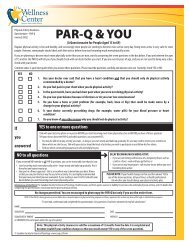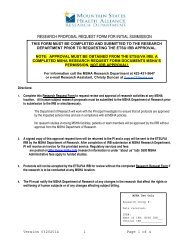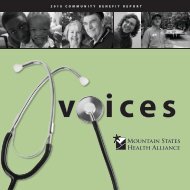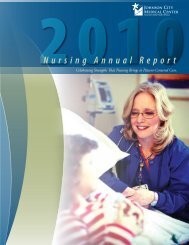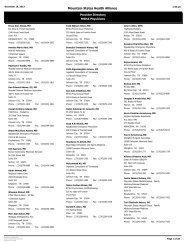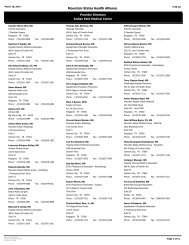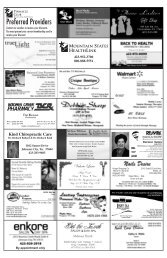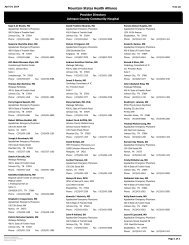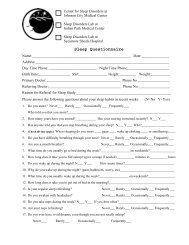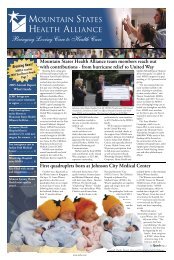JCMC Nursing Annual Report - Mountain States Health Alliance
JCMC Nursing Annual Report - Mountain States Health Alliance
JCMC Nursing Annual Report - Mountain States Health Alliance
Create successful ePaper yourself
Turn your PDF publications into a flip-book with our unique Google optimized e-Paper software.
Falls Prevention Program:<br />
Decision Making by Front-Line Nurses<br />
FALL RISK<br />
Direct-care nurses were asked to use the Hendrich<br />
and Morse fall risk tools on each of their patients for<br />
a two-week period trial in 2008. From their input,<br />
the Morse risk assessment tool was determined to<br />
be most appropriate for our nursing practice. The<br />
Hendrich fall risk assessment tool received a mean<br />
rating of 2.66 out of 4.00 on a Likert scale, while the<br />
Morse tool received a mean score of 3.27.<br />
On July 27, 2009, the new Fall Prevention Program<br />
using the Morse fall risk tool was implemented. This<br />
was a very comprehensive undertaking regarding<br />
the change of policy, forms and practice throughout<br />
MSHA. Using the yellow armband with “Fall<br />
Risk” inscribed on the band was adopted by our<br />
organization as the method of identifying patients at<br />
high risk for falls.<br />
Nationally recognized as the color for high fall<br />
risk patients, the yellow armband is just one of<br />
the colored armbands that identify patients with<br />
special needs. The adoption of a uniform colorcoded<br />
armband system by MSHA in July 2009<br />
presents a clearly defined practice for identifying and<br />
communicating patient risk factors, or special needs,<br />
by standardizing the use of color-coded armbands<br />
to support safe patient care based upon the patient’s<br />
assessed needs and wishes.<br />
JOHNSON CITY MEDICAL CENTER<br />
PATIENT FALL RATES<br />
Rate = falls per patient days x 1000<br />
4.00<br />
3.50<br />
3.00<br />
2.50<br />
2.00<br />
2010<br />
1.50<br />
2009<br />
1.00<br />
2008<br />
0.50<br />
0.00<br />
JAN FEB MAR APR MAY JUN JUL<br />
AUG SEP<br />
OCT<br />
NOV<br />
DEC<br />
New Fall Program<br />
started July 27, 2009<br />
2008<br />
2009<br />
2010<br />
JAN FEB MAR APR MAY JUN JUL AUG SEP OCT NOV DEC<br />
2010 3.59 3.16<br />
2009 3.37 3.00 2.48 3.04 3.29 2.85 3.55 1.98 3.79 2.89 3.75 2.74<br />
2008 3.30 2.44 2.02 1.59 2.23 2.46 3.39 1.89 2.57 2.60 2.31 3.27<br />
Aquapheresis<br />
A new treatment for congestive heart failure<br />
was made available to our patient population in<br />
2009. Aquapheresis, a pump that filters blood and<br />
removes only water and sodium, was purchased in<br />
2009 with the first utilization starting in August<br />
2009. Congestive heart failure patients are able to<br />
get out of bed during this therapy, which is much<br />
more comfortable for them. Most patients receive<br />
the treatment for 3 days, with most seeing a drastic<br />
weight loss between 15 and 30 pounds in 3 days.<br />
Patients have been able remove their bipap apparatus<br />
or oxygen therapy after the aquapheresis treatment.<br />
Swelling is dramatically decreased in all areas so<br />
patients who have had severe pain secondary to<br />
swelling are able to mobilize more freely.<br />
19<br />
bringing loving care to health care | www.msha.com



